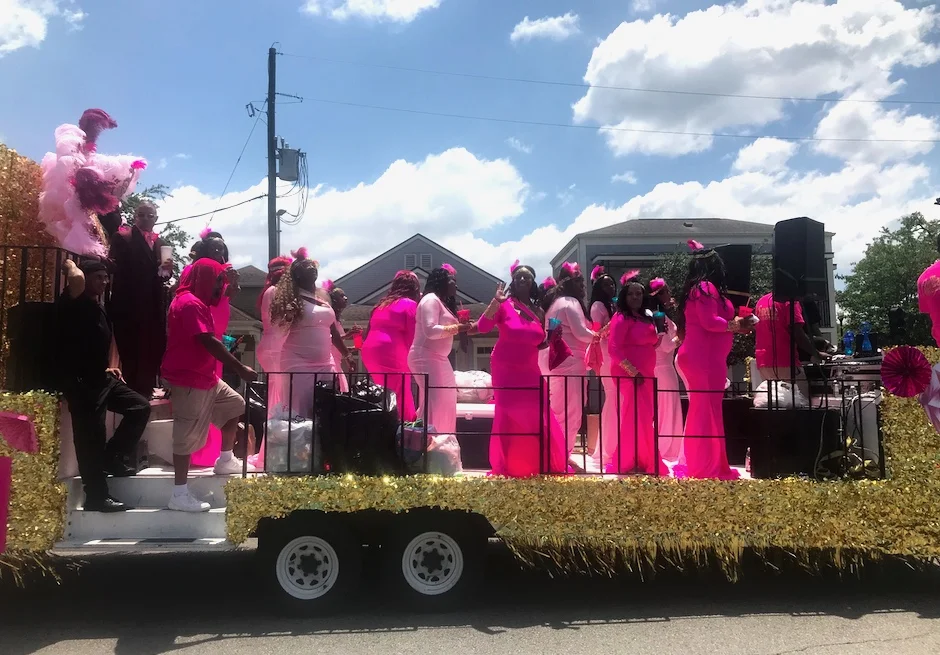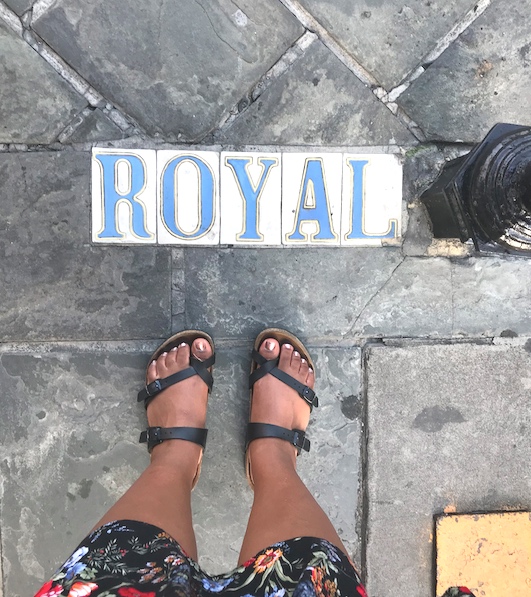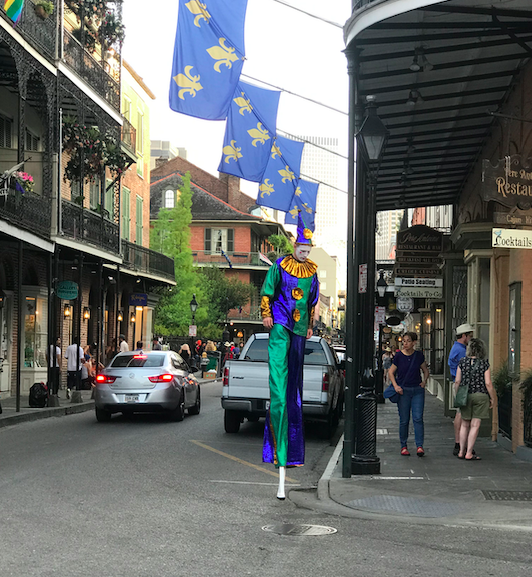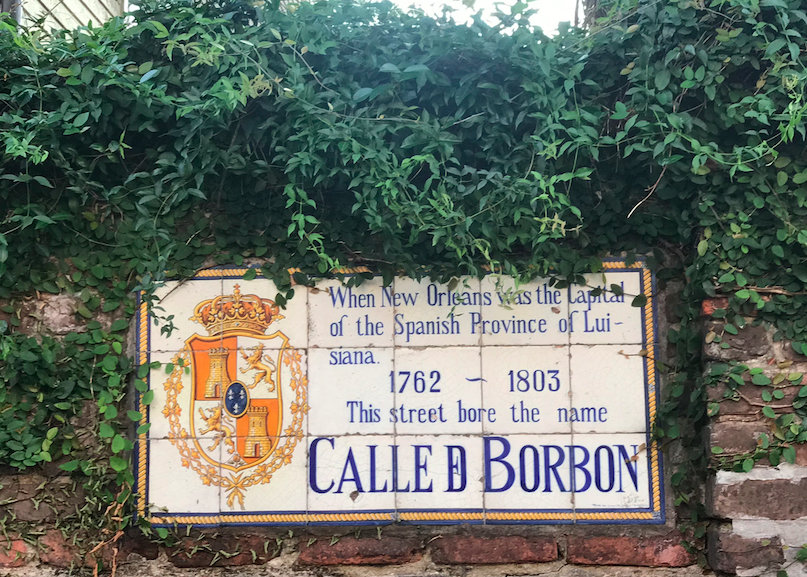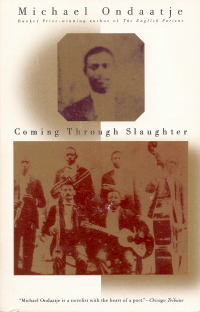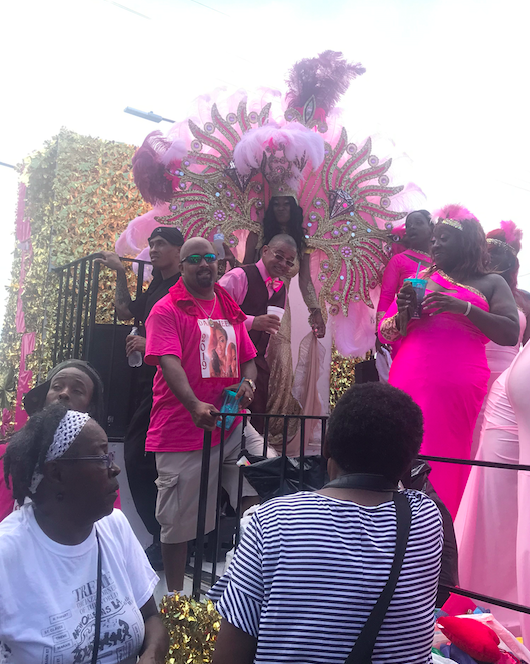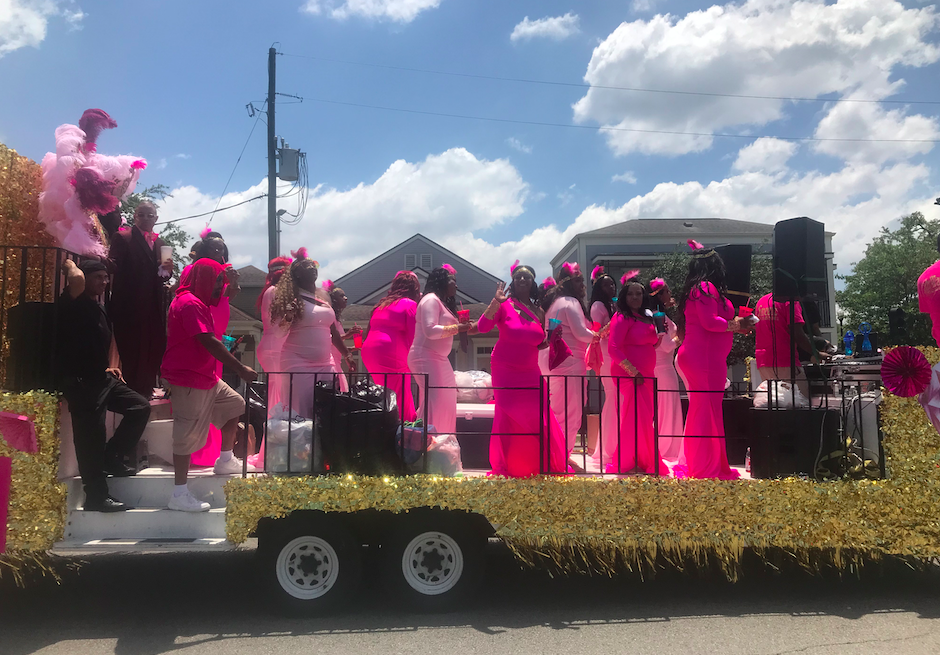Being in New Orleans is like walking through a vivid dream- colorful, musical, and all-consuming. Every street you walked down contained a different sound, smell, visual to indulge in. Walk down Royal Street and not only is one reminded ofthe lavish lifestyles of Lestat and Louis from Interview With The Vampire, but also embraced by the sounds of jazz instruments and the sight of street art lining the sides of a fence. Make a wrong turn and you might find yourself on Bourbon Street watching (and smelling) hundreds of people indulge in drinking and eating on the streets like Ignatius J. Reilly from Confederacy of Dunces- without a care for what others might think. Regardless of what street you find yourself on, you are very likely to find a charming local ready to welcome you to Louisiana and excited to hear what brought you to their southern state.
As one local had put it, Louisiana, similar to Los Angeles, is like a melting pot of cultures and personalities. While we had already explored some of the more affluent and tourist cultures of New Orleans, I was excited to break away from this section of New Orleans and immerse myself in the Sunday tradition of the Second line parade. The Second line parade is a part of New Orleans’ cultural heritage, stemming from jazz funerals in which African Americans would celebrate the life of their loved one by marching down the street with a brass band procession. Modern day, different clubs every Sunday take the street in their bright colored costumes (that will later be thrown out after usage) and march for four hours past the French Quarter and through the Seventh Ward with a trail of excited onlookers, both locals and tourists, dancing behind the floats and brass jazz players.
Reading Michael Ondaatje’s novel, Coming Through Slaughter, you get a sense of the jazz scene and origin through the life of Buddy “King” Bolden who is considered to have developed jazz and influenced early New Orleans jazz players. Buddy never played the same song twice, his mind was constantly changing the music like “changing direction with every sentence, sometimes in the middle… moving so fast it was unimportant to finish and clear everything.” The more I read about Buddy Bolden, the more perplexed I was that I had never learned about him before despite the lessons I learned on jazz figures Duke Ellington, Louie Armstrong, and Scott Joplin in high school. But Bolden wasn’t the man who history remembers because unlike the jazz figures to follow, Bolden never recorded his music nor took pictures, “he stayed away while others moved into wax history, electronic history.”
“If you never heard him play some place where the weather for instance could change the next series of notes – then you should never heard him at all.”
During this portion of the bookpacking experience, I am beginning to see traces of the stories and characters we read of in my surrounding environment. Being at the parade gave me a little glimpse of what watching Buddy Bolden might have been. Bolden began his musical career in parades, stepping out from the crowd of musicians and “playing, too loud but real and strong.” As performers occasionally stepped out of the line to the rhythm of their instrument, I thought back to those lines from Ondaatje’s novel. Here were these amazing musicians and dancers from the MoneyWasters club putting their heart and soul into this glorious celebration of jazz and African American culture. Some of these talented individuals were children, dancing and playing instruments in ways I could barely imagine. It’s amazing to see so much talent and passion put into this parade, a parade I could hardly handle walking in without feeling like my entire body would become a puddle of sweat in the above ninety-degree temperature.
Like Buddy Bolden, many of these talented people might never make it into history. In a few years, popular culture won’t know the name of the little boy who danced impressively on the balcony of his house then ran down the stairs to join the passing parade. No one else will likely hear the sounds of the MoneyWasters’s brass band or see images the beautiful women who rode on the floats that Sunday. If not for being at the Second line parade on May 25th, 2019, I too would have never known of these people or seen that moment. It makes me sad and grateful to think how only in our memories will they live on. But for the community that sees these parades every Sunday, they will continue to witness the Buddy Boldens of this generation and know their names and their stories and this might have to be enough.
“With every sweet stylized gesture that he knew no one could see he aimed for the gentlest music he knew. So softly it was a siren twenty blocks away. He played till his body was frozen and all that was alive and warm were the few inches from where his stomach forced the air up through his chest and head into the instrument.”
